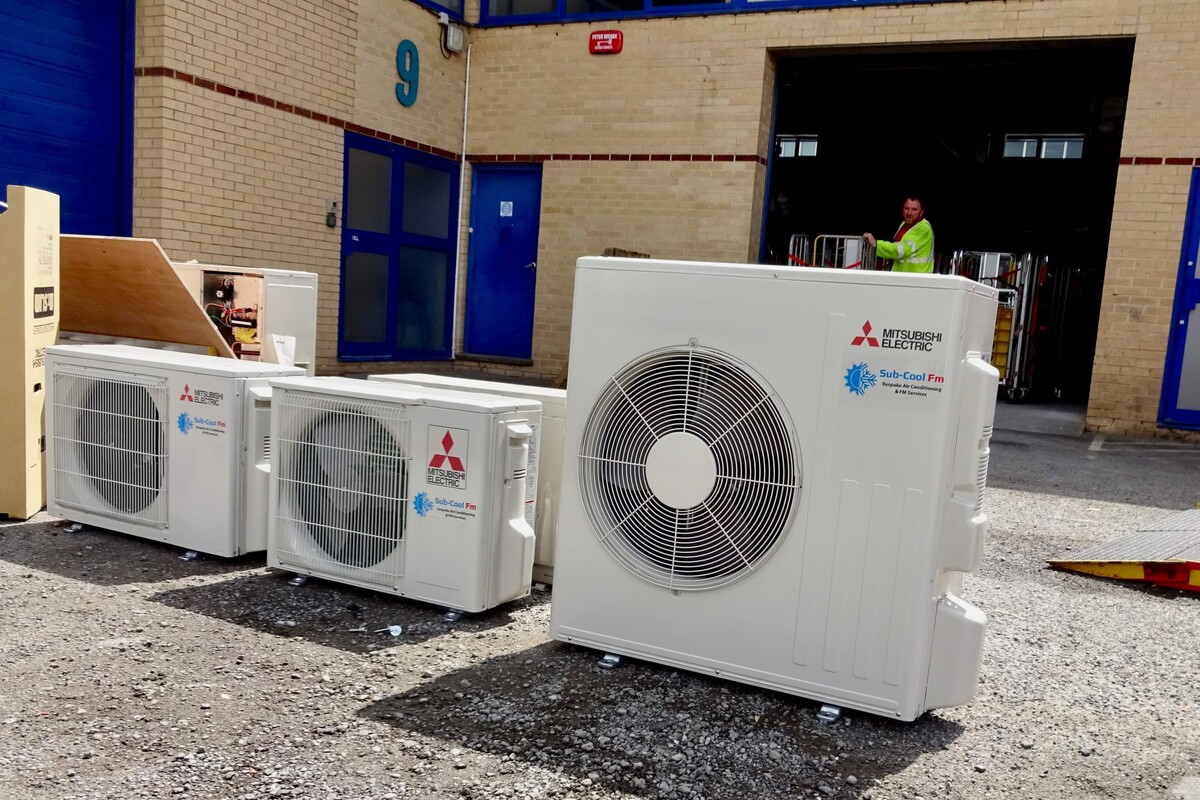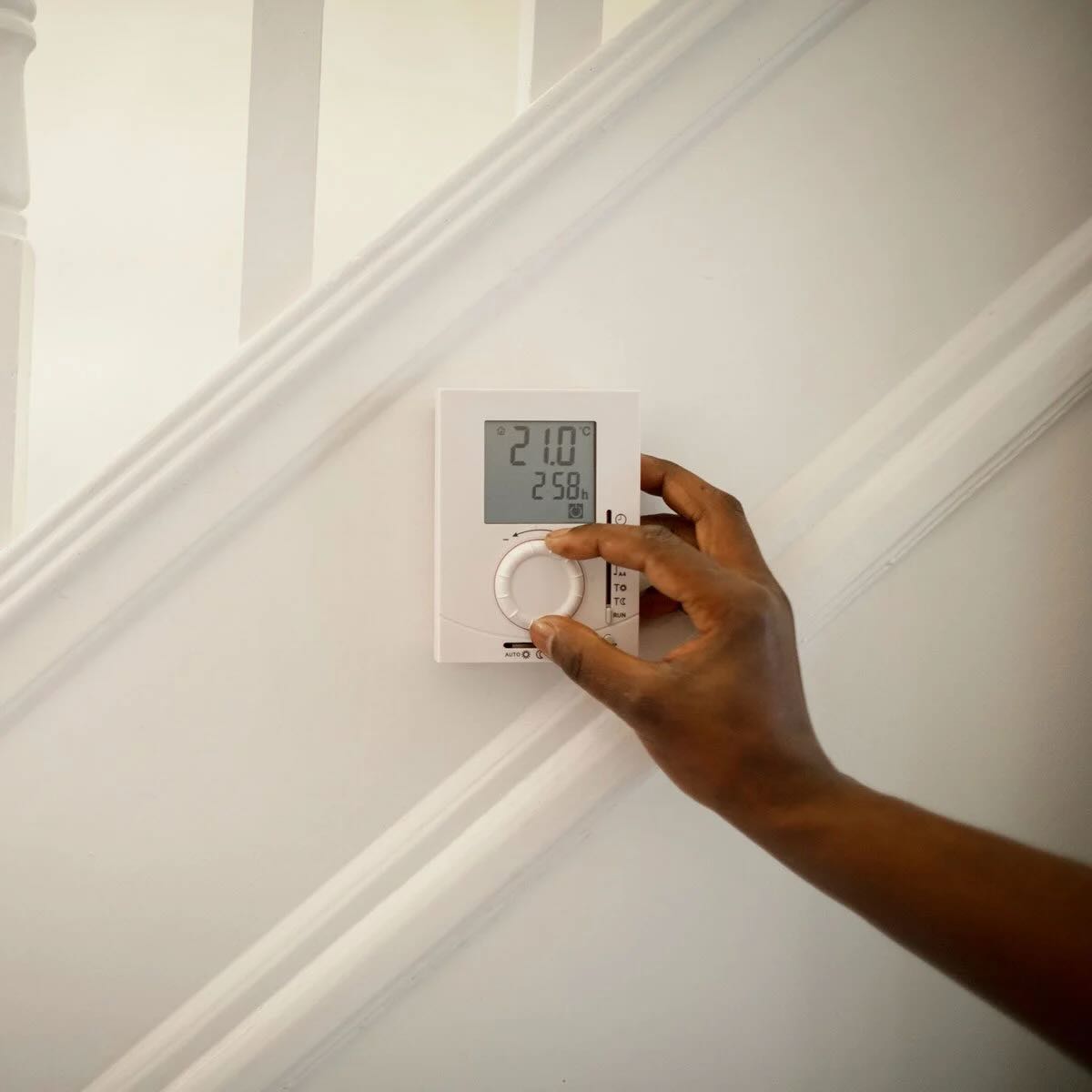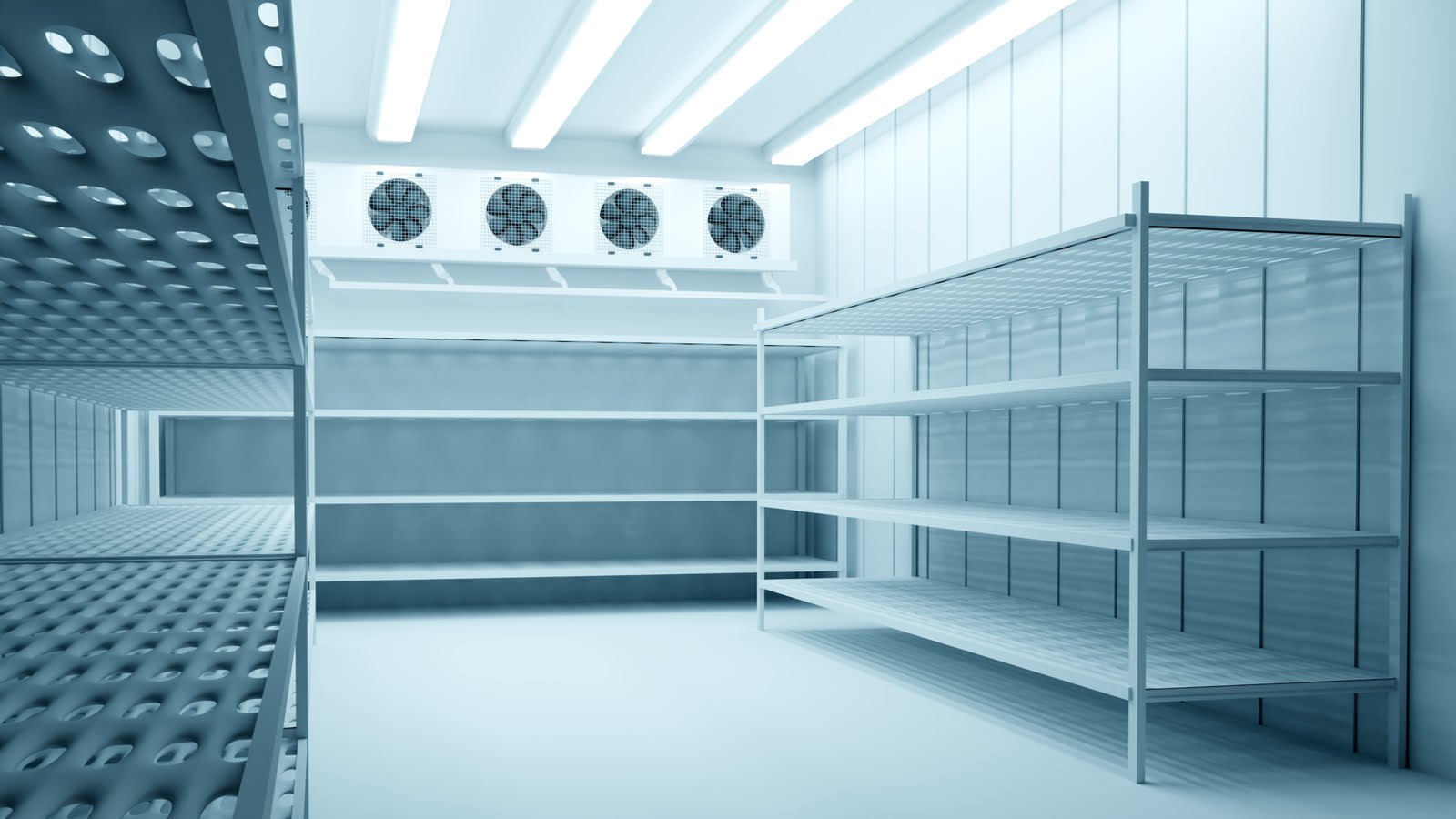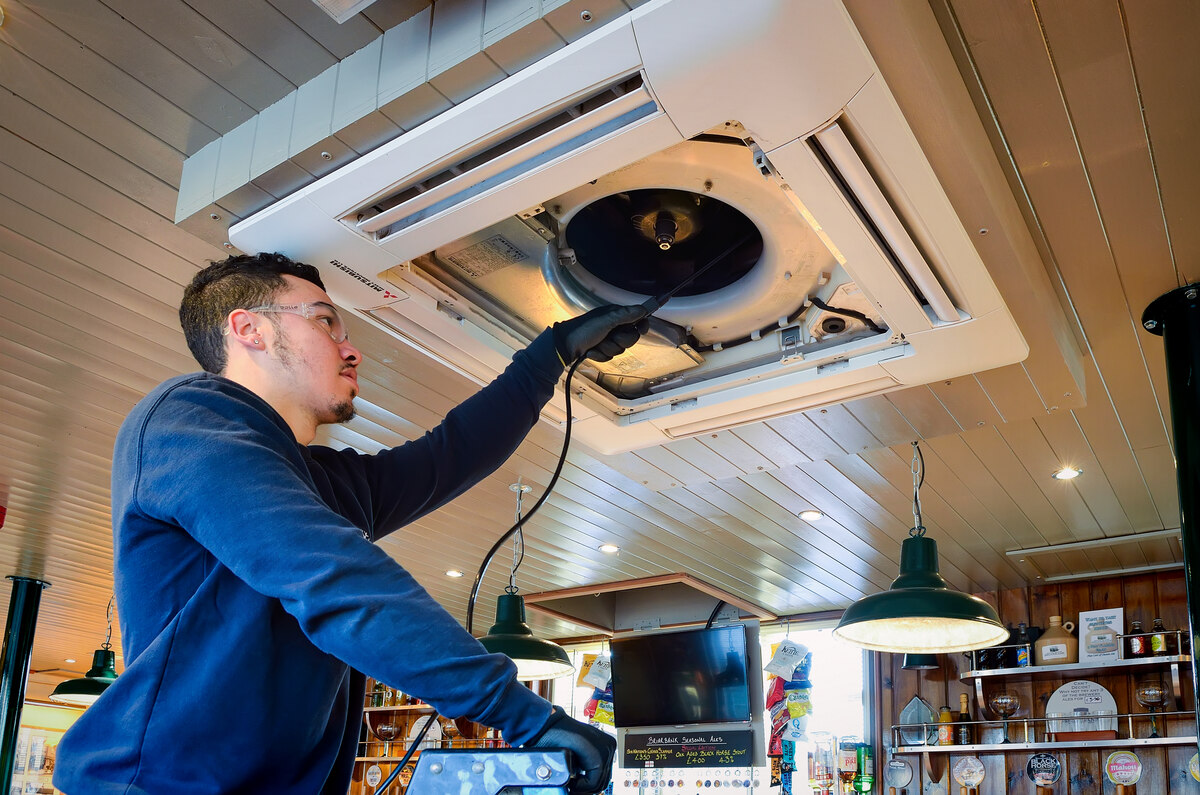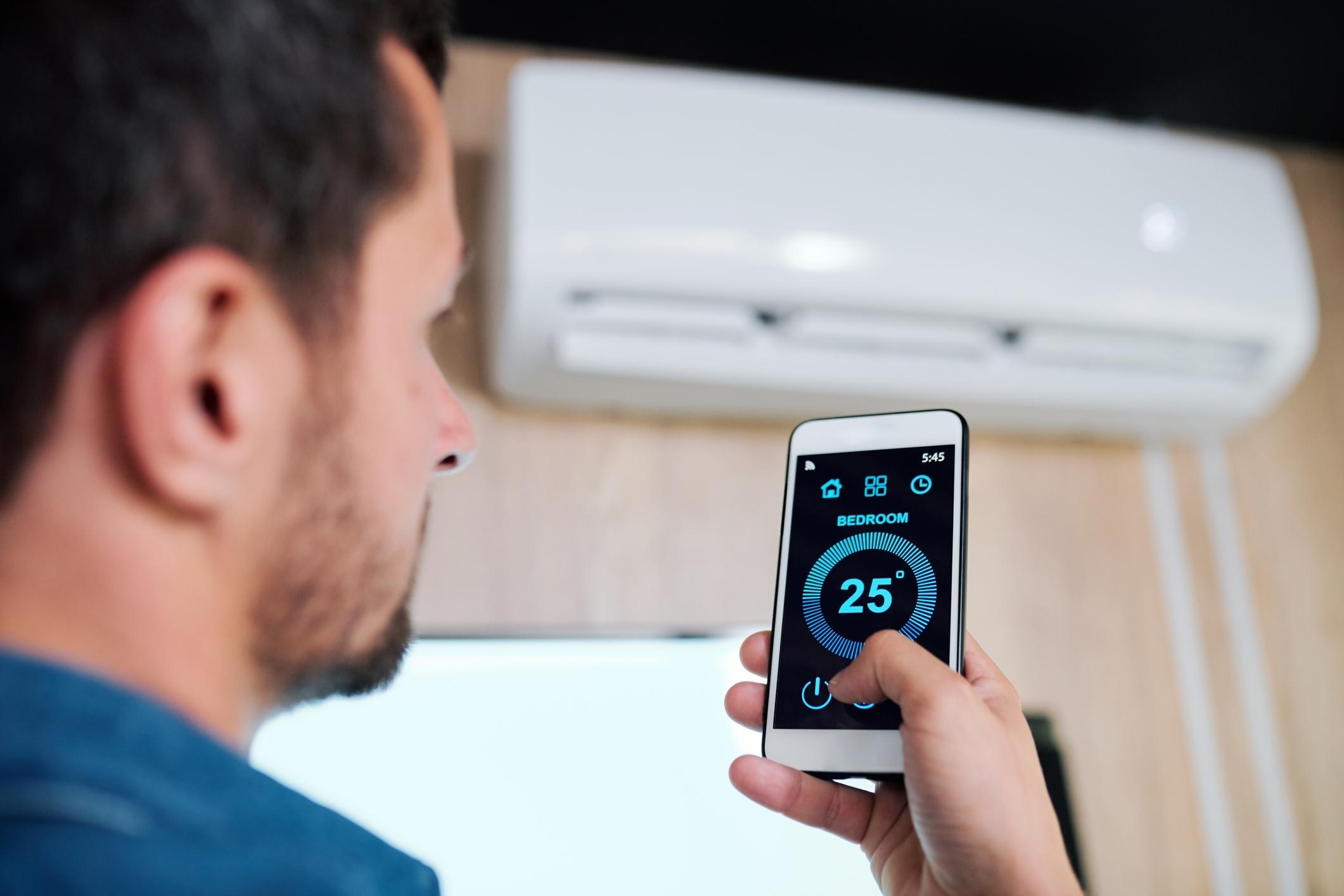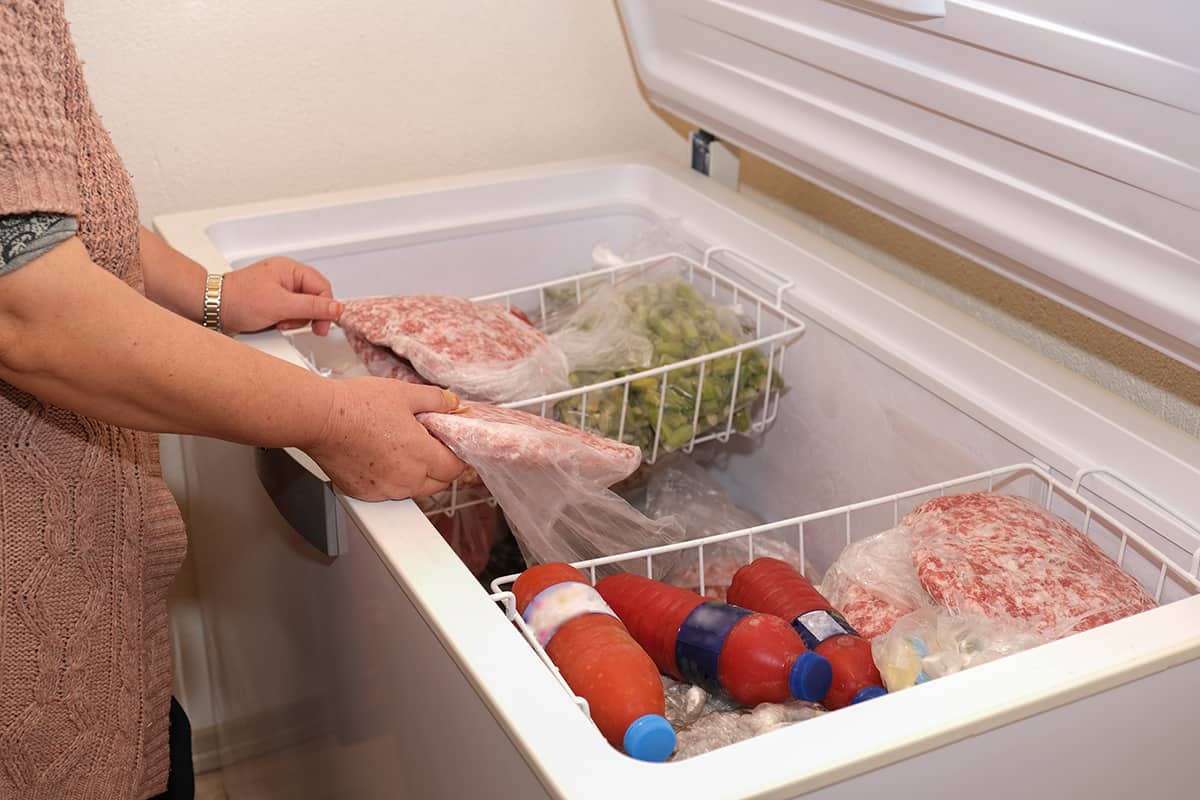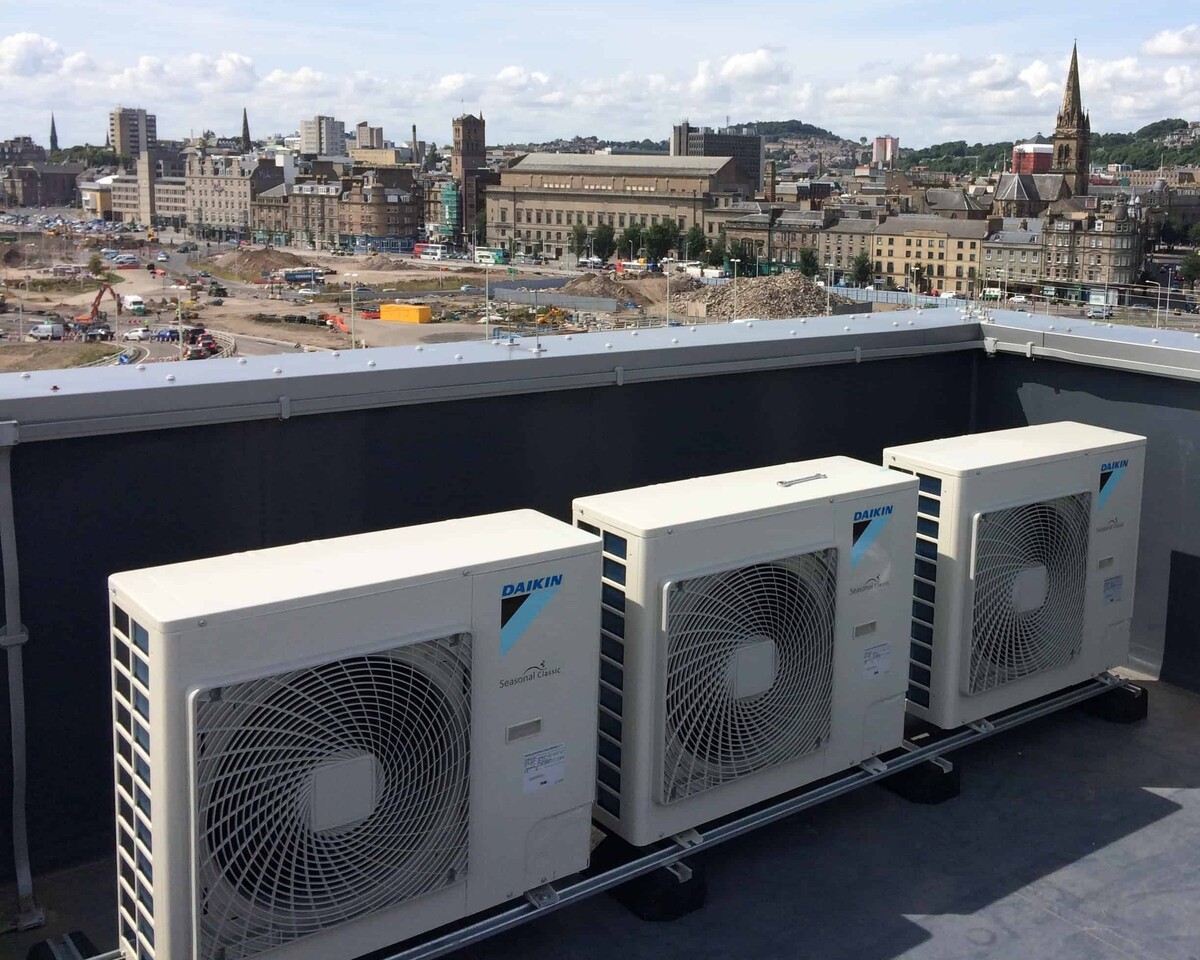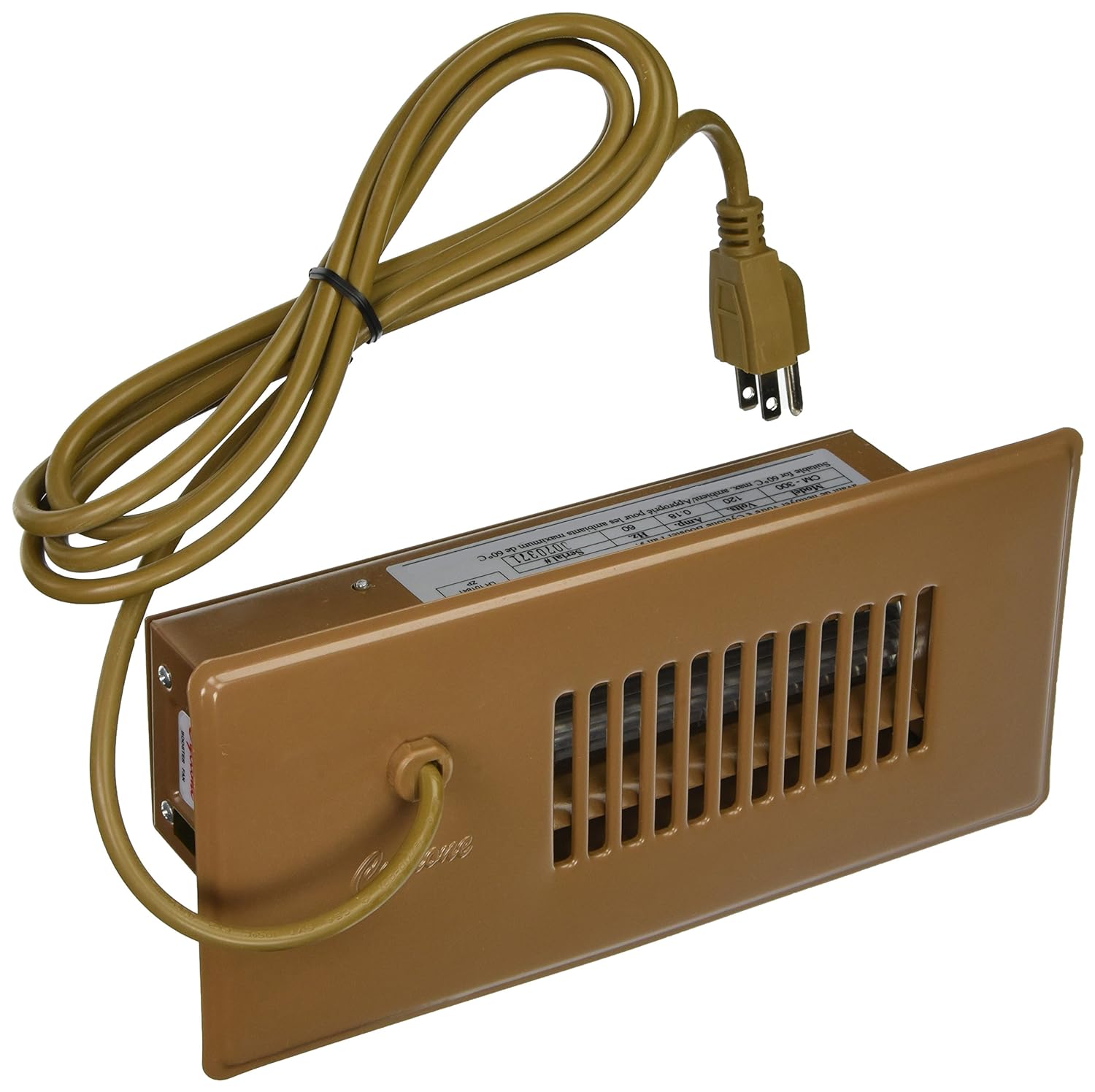Home>Home Maintenance>What Temperature Should The Office Air Conditioning Be Set At
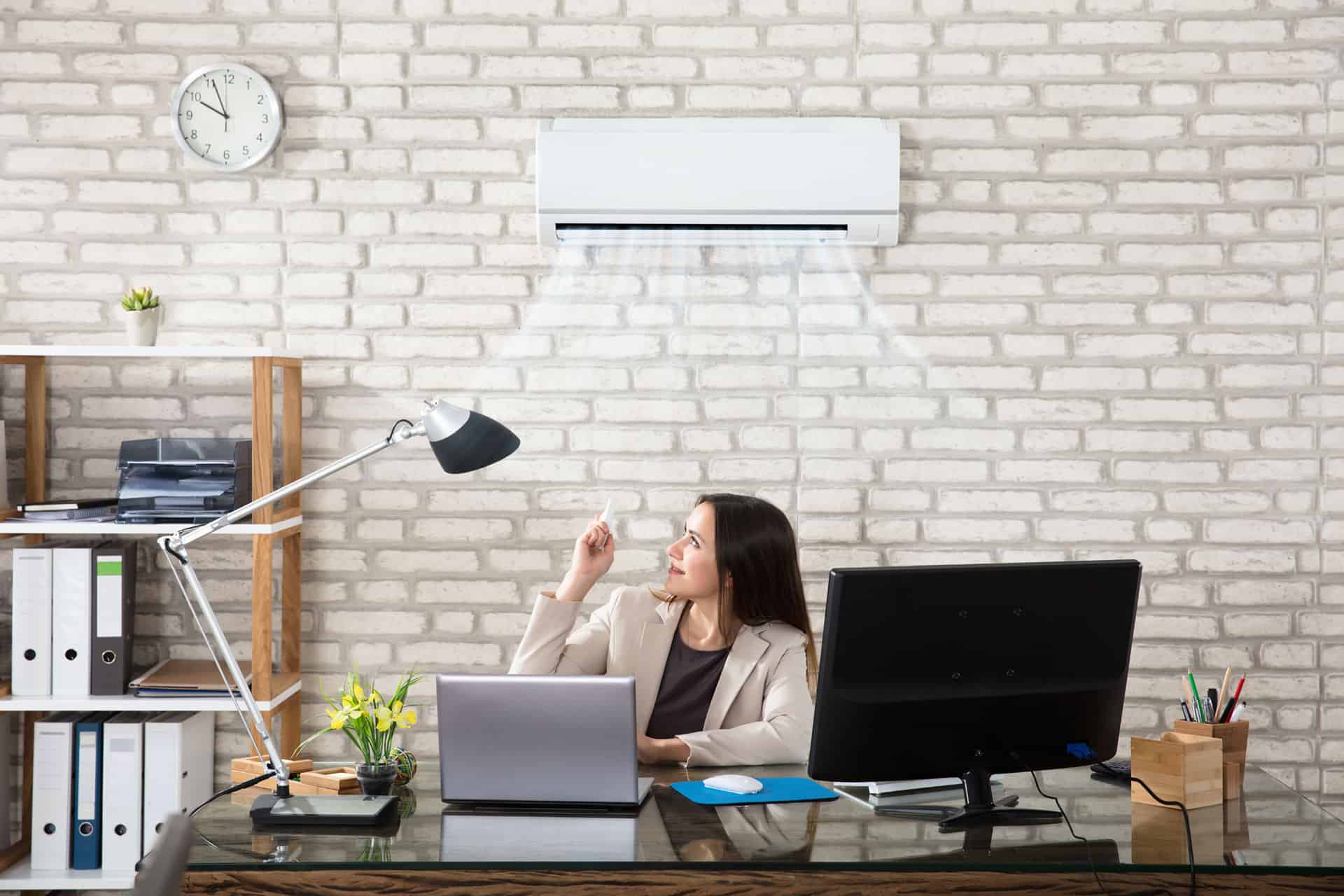

Home Maintenance
What Temperature Should The Office Air Conditioning Be Set At
Modified: March 6, 2024
Find out the ideal temperature to set your office air conditioning for optimal comfort and productivity. Expert tips and advice for home maintenance.
(Many of the links in this article redirect to a specific reviewed product. Your purchase of these products through affiliate links helps to generate commission for Storables.com, at no extra cost. Learn more)
Introduction
Creating a comfortable and conducive work environment is essential for any office setting. One crucial aspect of a comfortable workspace is the temperature. Finding the right balance in office air conditioning can make a significant difference in the well-being, productivity, and overall satisfaction of employees.
However, determining the ideal temperature for an office space can be challenging. Factors such as personal preferences, climate, and energy efficiency play a role in finding the perfect temperature setting. In this article, we will explore the various factors to consider, guidelines for comfort, productivity impact, energy efficiency considerations, and health effects when determining the optimal temperature for your office air conditioning system.
Key Takeaways:
- Finding the right office temperature is crucial for employee comfort and productivity. Consider factors like climate, occupancy, and equipment to create a comfortable and efficient workspace.
- Maintaining a comfortable office temperature promotes employee well-being and energy efficiency. Implementing tips like proper maintenance, avoiding thermostat wars, and using natural ventilation can create a harmonious work environment.
Factors to Consider When Setting Office Air Conditioning Temperature
When determining the temperature for your office air conditioning system, several factors need to be taken into account:
- Climate: The climate in which your office is located plays a significant role in determining the ideal temperature setting. In hot and humid regions, a lower temperature may be needed to combat the heat, while in colder climates, a slightly higher temperature may be sufficient.
- Occupancy: The number of people occupying the office space is an essential consideration. A packed office with several employees may require a lower temperature to maintain a comfortable environment, whereas a sparsely populated office may not require as much cooling.
- Building Insulation: The level of insulation in your office building affects its ability to maintain a consistent temperature. Well-insulated buildings require less cooling, whereas poorly insulated spaces may require more cooling to counteract external temperature fluctuations.
- Office Equipment: The presence of electronic devices and office equipment generates heat. Consider the number and type of equipment present in your office when setting the temperature to offset the additional heat produced.
- Elderly or Vulnerable Individuals: If your office has elderly or vulnerable individuals, keeping the temperature slightly higher can help them stay comfortable and prevent health issues associated with cold environments.
- Physical Activity: If your office includes physically demanding tasks or activities, a cooler temperature may be beneficial to prevent overheating and increase employee comfort.
Considering these factors will help you determine the most appropriate temperature range for your office space, ensuring the comfort and well-being of your employees.
Comfort Guidelines for Office Temperature
Ensuring a comfortable temperature in the office is essential for the well-being and productivity of employees. While personal preferences may vary, there are general guidelines to keep in mind when setting the office air conditioning temperature:
- Recommended Temperature Range: The Occupational Safety and Health Administration (OSHA) recommends maintaining a temperature range of 68°F to 76°F (20°C to 24°C) for office spaces. This range typically offers a comfortable environment for most individuals.
- Avoid Extremes: Avoid setting the temperature at extremes, such as extremely cold or hot temperatures. Very cold temperatures can lead to discomfort, while hot temperatures can cause fatigue and decrease productivity.
- Flexibility: Provide some flexibility in temperature control, allowing employees to adjust within a reasonable range to accommodate individual preferences. A comfortable work environment promotes satisfaction and productivity.
- Zoning: If feasible, consider implementing a zoning system that allows different areas or floors of the office to have individual temperature controls. This enables better customization based on specific needs and preferences.
- Consistency: Maintain a consistent temperature throughout the office to avoid temperature fluctuations. Rapid temperature changes can be uncomfortable and result in distractions and decreased productivity.
By following these comfort guidelines, you can create an office environment that promotes employee satisfaction, comfort, and productivity.
Productivity Impact of Office Temperature
The office temperature has a profound impact on employee productivity. Extreme temperatures, whether too hot or too cold, can significantly affect concentration, alertness, and overall productivity levels. Here’s how different temperature ranges can impact employee performance:
- Too Hot: When the office temperature is excessively hot, employees may experience discomfort, which can lead to fatigue, reduced concentration, and decreased productivity. High temperatures can also cause drowsiness and make it difficult to focus on tasks.
- Too Cold: Similarly, when the office temperature is too cold, employees may experience discomfort, reduced dexterity, and increased distractions due to shivering or being bundled up. Cold temperatures can impair cognitive function and slow down mental processes, leading to a decrease in productivity.
- Optimal Temperature: Maintaining an optimal office temperature within the recommended range of 68°F to 76°F (20°C to 24°C) promotes a comfortable and conducive work environment. This temperature range allows employees to focus on their tasks without experiencing excessive discomfort or distraction.
Studies have shown that when employees are comfortable, they are more likely to remain focused, make fewer errors, and complete tasks efficiently. By providing an appropriately controlled temperature, employers can help create an environment that supports maximum productivity and employee engagement.
Energy Efficiency Considerations
While maintaining employee comfort is essential, it is also crucial to consider energy efficiency when setting the office air conditioning temperature. Energy-efficient practices not only help reduce the environmental impact but also contribute to cost savings. Here are some energy efficiency considerations to keep in mind:
- Programmable Thermostats: Invest in programmable thermostats that allow you to set specific temperature schedules based on office hours. This ensures that the air conditioning is only running when needed, saving energy during off-hours.
- Temperature Setbacks: Consider implementing temperature setbacks during non-working hours or when the office space is unoccupied. Setbacks involve adjusting the temperature slightly higher or lower to reduce heating or cooling demand when employees are not present.
- Natural Ventilation: Utilize natural ventilation methods, such as opening windows or using fans, during temperate seasons to reduce reliance on air conditioning. This can help conserve energy and improve indoor air quality.
- Sealing and Insulation: Ensure that windows, doors, and any other areas prone to air leakage are properly sealed and insulated. This prevents cool or warm air from escaping, reducing the workload on your air conditioning system.
- Regular Maintenance: Schedule regular maintenance for your air conditioning system to ensure it operates efficiently. Dirty filters, clogged ducts, or malfunctioning components can lead to energy waste and decreased performance.
- Employee Awareness: Educate employees about energy-saving practices, such as closing windows and doors when the air conditioning is running or using natural lighting instead of overhead lights. Encouraging energy-conscious behavior can contribute to a greener workplace.
By implementing energy-efficient practices, you can reduce energy consumption, lower utility costs, and contribute to a more sustainable office environment.
Set the office air conditioning between 73-78°F for comfort and productivity. Keep in mind that every individual’s comfort level may vary, so consider using fans or allowing employees to dress in layers.
Health and Wellness Effects of Office Temperature
The office temperature not only impacts productivity but also has significant effects on the health and well-being of employees. Maintaining the right temperature can help promote a healthy work environment. Here are some health and wellness effects of office temperature:
- Thermal Comfort: Maintaining a comfortable office temperature is vital for thermal comfort, which refers to the subjective satisfaction with the thermal environment. When employees are thermally comfortable, they experience fewer physical discomforts, such as headaches, dizziness, or excessive sweating.
- Respiratory Health: Extreme temperatures, particularly hot and humid conditions, can affect indoor air quality and promote the growth of bacteria, mold, and other allergens. This can aggravate respiratory conditions, such as allergies, asthma, or respiratory tract infections. Proper temperature control helps maintain a healthy indoor environment.
- Mental Well-being: Office temperature influences mood and mental well-being. Uncomfortable temperature conditions can lead to irritability, decreased motivation, and increased stress levels. Conversely, a pleasant and consistent temperature can contribute to a positive work environment and improved mental health.
- Sleep Quality: Extreme temperatures, particularly overly hot or cold environments, can disrupt sleep patterns and affect the quality of rest. Poor sleep impacts overall health, cognitive function, and workplace performance. Maintaining a comfortable office temperature can help support better sleep quality.
- Productivity: When employees are healthy and comfortable, they are more likely to be productive. A well-regulated office temperature can help create an environment that minimizes distractions, reduces discomfort, and promotes focus and concentration.
Considering the health and wellness effects of office temperature is crucial for the overall well-being of employees. By providing a comfortable and healthy temperature environment, employers can help promote a positive workplace culture and enhance employee satisfaction.
Setting the Ideal Air Conditioning Temperature for Different Seasons
The ideal air conditioning temperature in your office will vary depending on the season. Here are some guidelines for setting the temperature during different seasons:
- Summer: During the hot summer months, it is recommended to set the office air conditioning temperature between 72°F to 76°F (22°C to 24°C). This provides a cool and comfortable environment while still being energy-efficient.
- Spring/Fall: As the weather transitions in the spring and fall, you can adjust the temperature slightly higher or lower, depending on the external conditions. Aim for a temperature range of 68°F to 72°F (20°C to 22°C) to maintain a comfortable atmosphere.
- Winter: In colder winter months, the temperature can be set between 68°F to 70°F (20°C to 21°C). This ensures a cozy and warm workspace without excessive heating costs.
Keep in mind that individual preferences may vary, so providing some flexibility for employees to adjust their immediate surroundings within these temperature ranges is beneficial.
Additionally, it is important to regularly monitor and adjust the temperature settings as needed to respond to changing weather conditions, occupancy levels, and comfort requirements.
Remember, finding the balance between employee comfort, energy efficiency, and seasonal variations is key to creating an optimal working environment throughout the year.
Tips to Maintain a Comfortable Temperature in the Office
Maintaining a comfortable temperature in the office is crucial for employee satisfaction and productivity. Here are some tips to help you achieve and maintain a comfortable temperature:
- Proper Air Conditioning System Maintenance: Regularly schedule professional maintenance for your air conditioning system to ensure optimal performance and efficiency. This includes cleaning or replacing filters, inspecting ductwork, and checking for any issues that may affect temperature control.
- Avoid Thermostat Wars: Encourage open communication and collaboration among employees to avoid “thermostat wars,” where individuals constantly adjust the temperature to their personal preferences. Set clear guidelines and educate employees about the importance of finding a temperature that suits the majority.
- Use Window Coverings: Take advantage of blinds, curtains, or shades to control the amount of sunlight entering the office. This can help regulate the temperature and reduce the strain on the air conditioning system.
- Optimize Natural Ventilation: When weather conditions permit, open windows or use fans to circulate fresh air throughout the office space. Natural ventilation can help maintain a comfortable temperature and improve air quality.
- Consider Zone Control: If feasible, implement zone control systems that allow different areas of the office to have individual temperature controls. This provides flexibility in meeting the specific temperature needs of different work areas or departments.
- Encourage Dress Code Flexibility: Consider implementing a more flexible dress code that allows employees to dress comfortably according to the season. This can help them adapt to different temperature conditions and reduce the need for extreme temperature settings.
- Provide Personal Space Tools: Equip employees with individual fans, heaters, or personal temperature control devices that allow them to adjust the temperature in their immediate workspaces according to their individual preferences.
Implementing these tips can help create a more comfortable and accommodating office environment, where employees can focus on their work without feeling too hot or too cold.
Conclusion
Setting and maintaining a comfortable temperature in the office is essential for employee well-being, productivity, and overall satisfaction. By considering various factors such as climate, occupancy, building insulation, and office equipment, you can determine the best temperature range for your workspace.
Following comfort guidelines, avoiding extremes, providing flexibility, and implementing zoning systems can contribute to an optimal temperature environment. It is important to strike a balance between employee comfort and energy efficiency to promote a healthy and sustainable workspace.
The temperature in the office has a significant impact on productivity, with extremes leading to discomfort, reduced concentration, and decreased efficiency. Keeping the office temperature within the recommended range fosters a comfortable and conducive working environment, improving employee focus and performance.
Energy efficiency considerations, such as using programmable thermostats, temperature setbacks, natural ventilation, and regular maintenance, can help reduce energy consumption, lower costs, and contribute to a greener workplace.
Office temperature also affects employee health and wellness. Maintaining thermal comfort promotes physical well-being, respiratory health, mental well-being, and better sleep quality, all of which are crucial for employees’ overall health and satisfaction.
Adapting the air conditioning temperature to different seasons, along with implementing tips such as proper system maintenance, avoiding thermostat wars, using window coverings, and providing personal space tools, can help create a consistently comfortable environment throughout the year.
In conclusion, by prioritizing employee comfort, energy efficiency, and health considerations, you can create an office environment that promotes satisfaction, engagement, and productivity. Tailoring the office temperature to meet the needs and preferences of employees contributes to a positive and harmonious workplace culture.
Frequently Asked Questions about What Temperature Should The Office Air Conditioning Be Set At
Was this page helpful?
At Storables.com, we guarantee accurate and reliable information. Our content, validated by Expert Board Contributors, is crafted following stringent Editorial Policies. We're committed to providing you with well-researched, expert-backed insights for all your informational needs.


